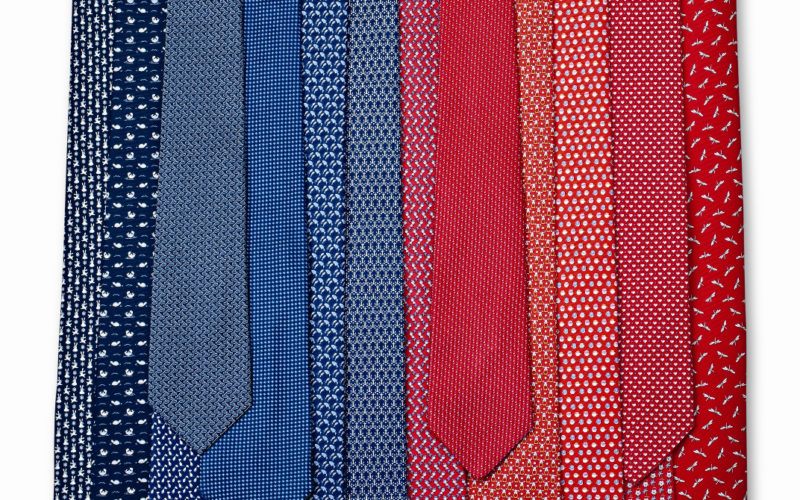Q. Someone wrote recently about travelling to Europe and I too am going to England and wondered about stripes and plaids. I think certain families have their own tartans and some stripes are associated with schools. If so, are there any necktie designs that I should not wear in meetings in the UK, or do they assume we Yanks wouldn’t know any better?
A. The truth is you don’t need to spend much time worrying about this as an American, even though there certainly is history about what is right and wrong amongst the Brits.
Traditional British regimental ties have diagonal stripes on not-too-shiny silk fabric. These ties are deeply entrenched in British heritage and are part of the military environment. Certain colors and specific widths of the stripes are worn by members of a brigade. (As an aside, in the original British regimental tie, the stripes go from left to right, unlike the American stripes, where the lines usually descend from right to left.) They have been worn by generations of men with an identifiable pride to represent the wearers’ membership in their military regiments. More recently, this practice has expanded beyond the military to also include belonging to certain prestigious clubs or universities, such as Oxford or Cambridge.
As you suggest, there is a convention that one should not wear a regimental tie unless he served in that regiment, so as not to offend those who did serve. Wearing a tie with the colors and elements of an institution to which you do not belong is considered offensive and in bad taste; it shows poor manners in Britain.
You are also correct that a similar situation used to be true in Scotland, where upper-class families – or clans – had their own tartan/plaid. This is no longer the case. Today, anyone can wear any tartan of his choosing. I first became aware of this when I attended college at Pittsburgh’s Carnegie Tech (now Carnegie Mellon). We learned that when its founder, Andrew Carnegie, was young, his family was too poor to have its own tartan. But later, when he became one of the wealthiest men in the world, he had a new tartan created; it became the Carnegie tartan. Even though our football team was widely-known as one of the worst in the country, our famous bagpipers’ marching band proudly wore the “Carnegie tartan” kilt as its uniform. These days, as then, there is a bit of “faking it until you’re making it,” but I imagine a small pattern, a solid, or an abstract might be your best tie choices . . . probably not a US flag.
Please send your men’s dress and grooming questions or comments to MALE CALL: Lois.Fenton@prodigy.net









